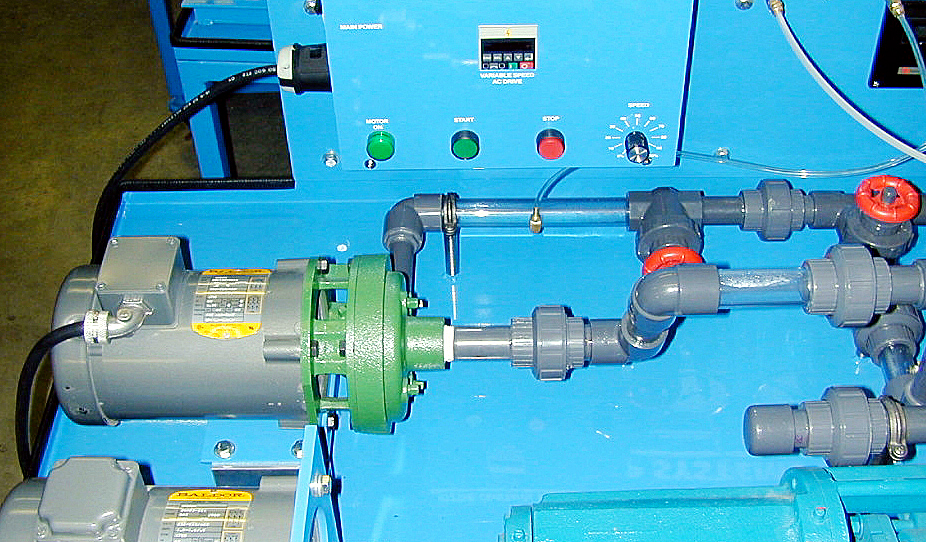
In the ever-evolving landscape of artificial learning ability (AI) and machine learning (ML), researchers and practitioners are continually exploring novel methodologies to enhance the efficiency, accuracy, and customization of models. One such innovation gaining footing is Pump Learning, a groundbreaking approach that challenges traditional paradigms in ML. In this article, we delve into the concept of Pump Learning, its principles, applications, and potential wastewater an effect on the future of AI. Pump Learning can be described as a dynamic and adaptive framework designed to improve performance of machine learning models through iterative refinement and augmentation of training data.
Unlike conventional ML techniques that rely on static datasets, Pump Learning employs a consistent feedback trap mechanism to update and expand the training data in real-time. This iterative process involves the gradual treatment of new samples into the training set, thus “pumping” fresh skills and knowledge into the model. Dynamic Data Augmentation: At the core of Pump Learning lies the concept of dynamic data augmentation, in which the training dataset is continuously enriched with new samples. These samples can be generated through various accessories such as online data exchange, man-made data generation, or active learning strategies. By incorporating diverse and relevant data points over time, Pump Learning enables models to conform to changing patterns and characteristics in the underlying data distribution.
Feedback-driven Optimization: Another fundamental principle of Pump Learning is feedback-driven optimization, which involves leverages performance metrics and user feedback to guide the iterative learning process. As the model interacts with new data samples, feedback accessories are used to evaluate its performance and identify areas for improvement. This feedback trap facilitates continuous refinement and optimization of the model’s variables, leading to enhanced predictive accuracy and generalization capability. Real-time Customization: Unlike traditional group learning approaches, Pump Learning operates in real-time, allowing models to dynamically adjust and center in a reaction to increasing environments and user preferences. This real-time customization is very advantageous in dynamic and heterogeneous fields where data distributions may shift rapidly over time. By staying understanding of changing conditions, Pump Learning models can maintain their meaning and effectiveness in dynamic environments.
Financial Forecasting: Pump Learning holds significant promise in the field of financial forecasting, where accurate estimations are crucial for informed decision-making. By continuously integrating real-time market data and feedback from trading algorithms, Pump Learning models can conform to changing market conditions and improve accuracy of financial estimations. Healthcare Analytics: In healthcare analytics, Pump Learning may be employed to enhance the performance of predictive models for disease prognosis, treatment planning, and patient monitoring. By incorporating real-time patient data and feedback from researchers, Pump Learning models can improve their predictive accuracy and assist healthcare providers in making more informed decisions.
Autonomous Systems: Pump Learning also finds applications in autonomous systems such as self-driving cars, drones, and robotics. By continuously updating their training data with real-world observations and feedback from sensors, Pump Learning models can conform to diverse operating conditions and navigate complex environments with greater reliability and efficiency. Natural Language Processing (NLP): In NLP tasks such as feeling analysis, language translation, and text generation, Pump Learning can be employed to improve the performance of language models by incorporating new linguistic patterns and user feedback. This enables more accurate and context-aware language processing, leading to enhanced user experiences in applications ranging from virtual assistants to chatbots.
While Pump Learning offers several advantages over traditional ML approaches, it also presents unique challenges and considerations. One of the primary challenges is the efficient management of surging data avenues and the scalability of learning algorithms to handle large quantities of prints of real-time data. Additionally, ensuring the quality and meaning of dynamically augmented training data postures challenges in terms of data preprocessing, feature engineering, and model approval. Looking ahead, future research directions in Pump Learning may focus on developing more sound and scalable algorithms, addressing issues related to data quality and disposition, and exploring novel applications in emerging fields such as edge calculating, Internet of Things (IoT), and federated learning. Moreover, interdisciplinary collaborations between researchers in machine learning, data science, and domain-specific fields will be needed for advancing the theory and practice of Pump Learning and unlocking its full potential across diverse application fields.
Pump Learning represents a paradigm shift in machine learning, offering a dynamic and adaptive framework for continuous learning and improvement. By integrating real-time data avenues, feedback accessories, and iterative optimization techniques, Pump Learning enables models to center and conform to changing environments and user preferences. As the field continues to center, Pump Learning holds immense potential to drive innovation and create new opportunities in fields ranging from finance and healthcare to autonomous systems and natural language processing. Through collaborative research and development efforts, we can harness the energy of Pump Finding out address complex challenges and shape the future of artificial learning ability and machine learning.